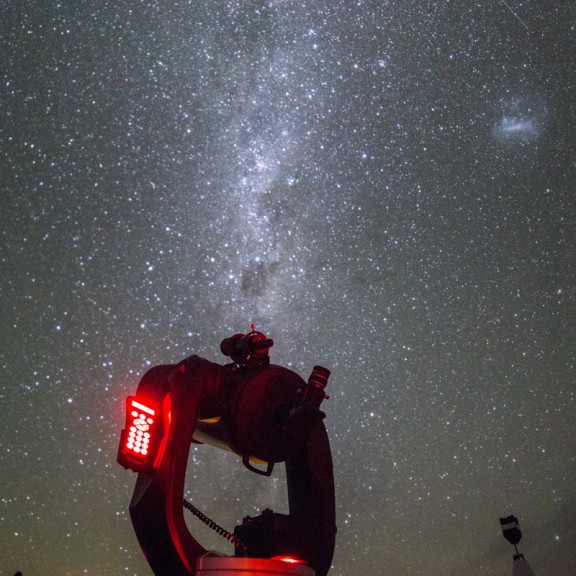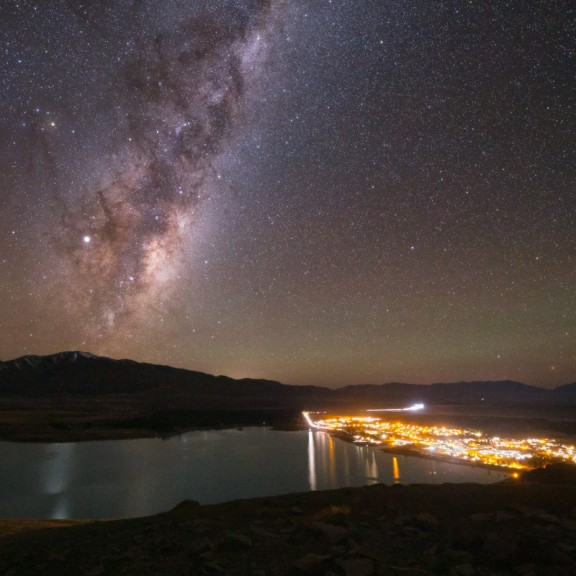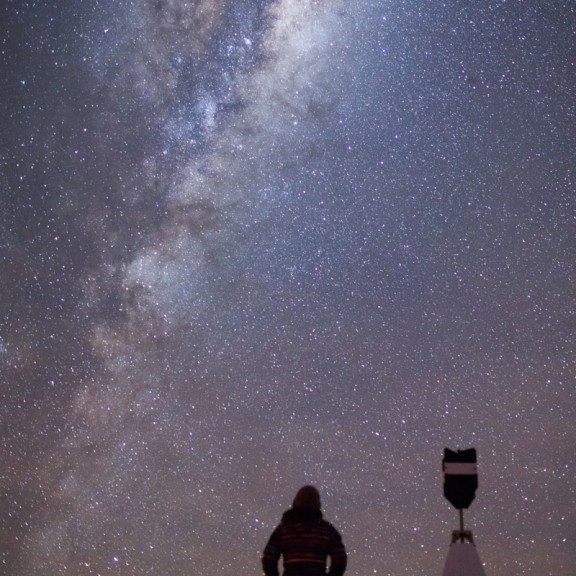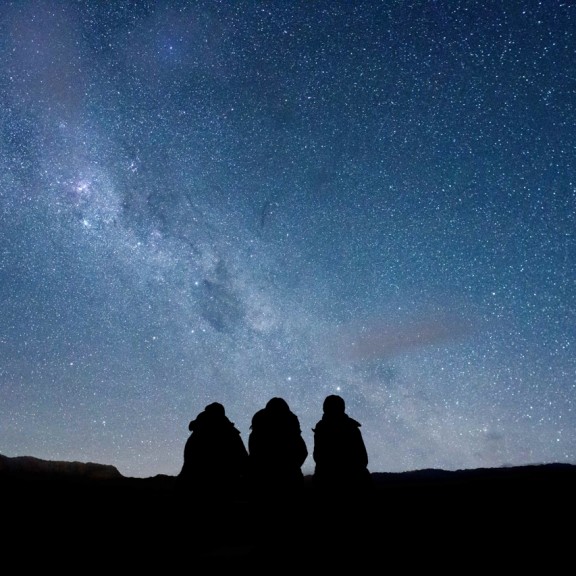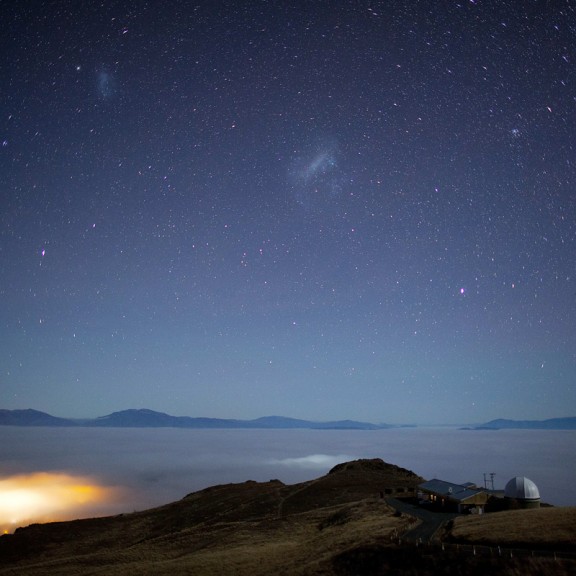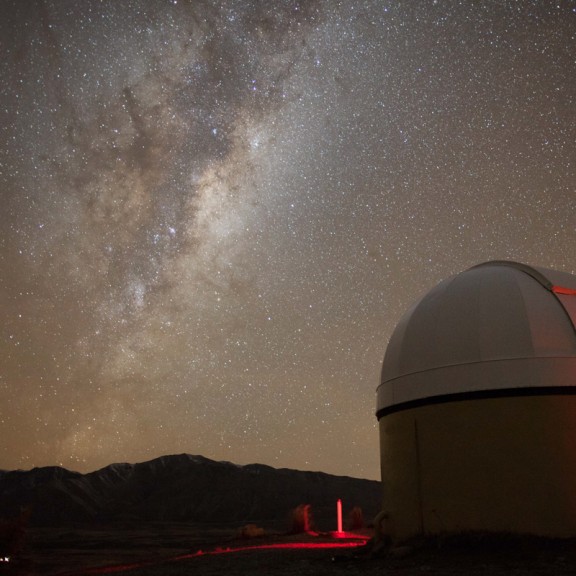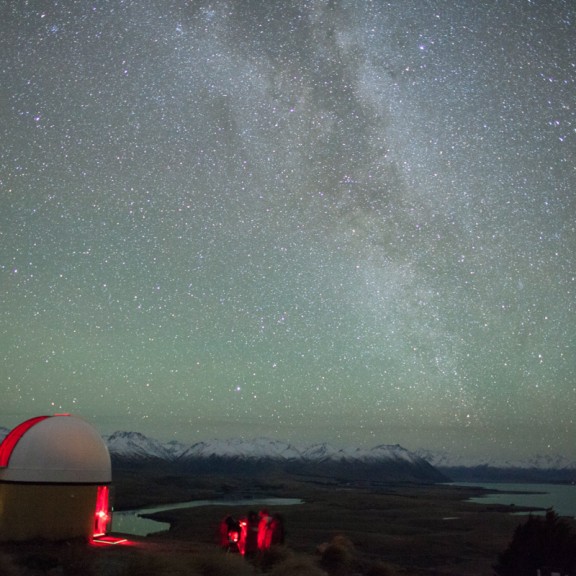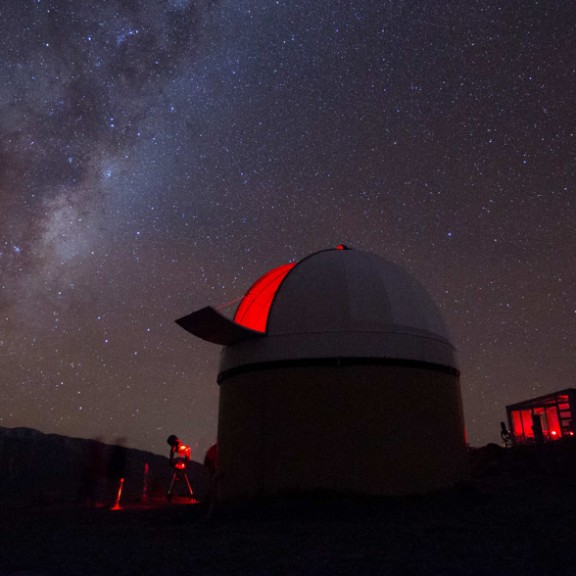Lake Takapō (Tekapo) is one of the best places on Earth to stargaze - and the Summit Experience is the most extraordinary way to do it. This is your chance to explore the night sky from New Zealand’s only professional research observatory, located on the summit of Mount John, in the heart of the Aoraki Mackenzie International Dark Sky Reserve. In fact, it’s the southernmost facility of its kind in the world.
You’ll begin your journey at Dark Sky Project Base, where we transport you to the summit. Once there, you’ll be guided by our passionate astronomy experts who will take you deep into the cosmos - starting with the naked eye, before moving on to powerful telescopes, including a 16” telescope inside our private observatory dome. Alongside constellations, planets, and star clusters, you might even catch a glimpse of a distant galaxy.
The setting is as incredible as the sky itself - surrounded by world-renowned observatory domes and some of the darkest, clearest skies in the Southern Hemisphere. You'll gain a richer understanding of both Māori and Western knowledge systems, and leave seeing the stars in a whole new way.
The experience runs for one hour and 45 minutes and includes transport, guiding, and use of Extreme Cold Weather jackets to keep you warm. A moderate level of fitness is required, as you’ll need to walk 100 metres on a gravel incline and manage a few steps in the dark. Our guides are there to help, but if you think you may need a more accessible tour, check out our Crater Experience at Cowan’s Private Observatory.
What to Expect
Location
University of Canterbury Mt John Observatory, Mount John Summit, Lake Takapō
Stargazing
Using 16” telescopes, or observatory dome, and with the naked eye.
Minimum Age
10 years and above.
Length of Tour
1 hour 45 minutes
Tour Times
Various times throughout the year, depending on time of sunset. Available 7 days.
Tour Itinerary
Check In
Please check in at least 15 minutes before your tour time, at our Dark Sky Project Base.
ECW Jackets
We’ll loan you an extreme cold weather (ECW) jacket, to keep you warm on the mountain’s peak.
Transport From Base
We’ll take you on a comfortable 15-minute bus journey to the Mount John Summit.
Stargazing
You’ll get the chance to stargaze with the naked eye (guided by the handheld lasers of our guides), powerful telescopes, and even through our Mount John Observatory dome.
Transport Back to Base
We’ll take you back on the bus to the Dark Sky Project base, where you started your experience.
Frequently Asked Questions
Summit Experience
Please arrive at Dark Sky Project, 1 Motuariki Lane, 20 minutes before your tour begins. (Get Google Maps directions here.) From here we’ll take you to the Mount John Observatory, your portal to the stars.
Dress for a night among the stars. The summit's altitude calls for warm clothing and sturdy footwear, regardless of the season. We’ll loan you an extreme cold weather (ECW) jacket, but it helps to start with something warm. Please avoid any clothing with lights or bright flashes.
The Summit Experience welcomes families with children aged 10 and above. For a more comfortable experience with younger children, you might like to try the Virtual Stargazing Experience.
Please note that the Summit Experience is not currently wheelchair accessible. We are actively exploring ways to make our tours more accessible in the future. If you have any specific accessibility needs or questions, feel free to contact us in advance so we can assist with your visit.
Same-day bookings are possible, but please note that spots are limited and often fill up quickly.
When conditions don’t allow us to stargaze outdoors, we’re happy to offer the option to reschedule your tour for another night.
If that’s not possible, you’re invited to join our specially curated hybrid experience, designed exclusively for our weather-impacted guests. This night-time experience blends the very best of our Virtual Stargazing and Dark Sky Experience – ensuring your visit is still inspiring, immersive, and memorable.
Alternatively, we can provide a voucher for future use or arrange a refund if preferred.
Yes! But please ensure your camera's flash is off to maintain the observatory's dark environment. Our guides can also provide tips for capturing the night sky.
The visibility of celestial wonders like the Milky Way or Aurora Australis (Southern Lights) depends on several factors, including weather and moonlight. But each clear night offers its own breathtaking view of the cosmos.
Every season presents a unique stargazing opportunity, with winter months often providing ideal conditions for clearer and darker skies.

